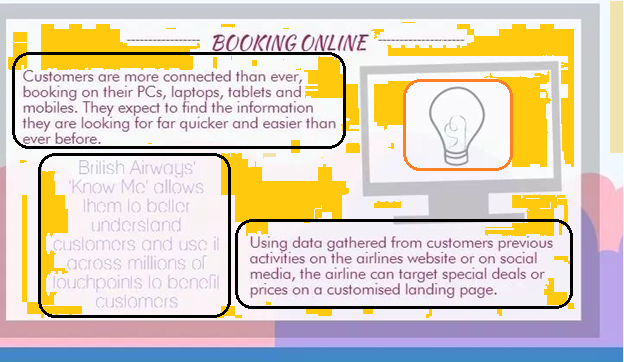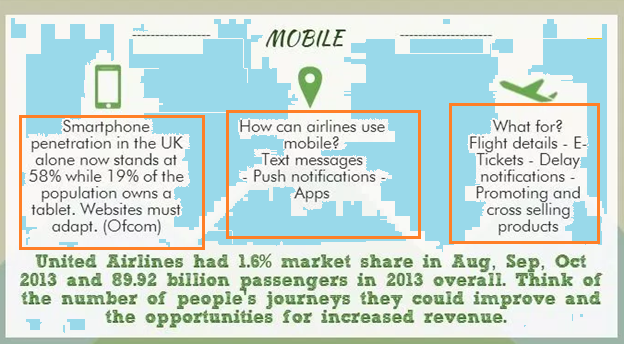Big data has been helping redefine the growth strategies of almost every industry or vertical you can name and the travel and hospitality sector cannot stay in isolation. Overall, the travel and hospitality industry faces the need to massively shift in strategies if it wants to improve its service quality, customer retention and satisfaction and revenue. And big data represents the next opportunity. Given the challenges other industries have faced in harnessing the powers of big data, it is not going to be a smooth adoption but the bumps and the hardships undertaken will be worth a huge value. Companies are going to face several challenges such as manpower shortage, confusing strategies and technology but some organizations are already harnessing the powers of big data.
Challenges facing the travel and hospitality industry
The travel and hospitality industry faces multi-dimensional, difficult challenges that are difficult to face with conventional strategies. These challenges can be broadly categorized into safety, sustainability, customer satisfaction, environmental compliance and profitability. The different challenges are described below:
Safety
Aviation is considered the safest form of transportation. If you fly in a jet aircraft, your chances of meeting an accident are one in 2.4 million. Still, aviation accidents cause deaths in huge numbers, when they happen. So, there is scope for research on minimizing aircraft accidents even further.
Customer experience
Airlines, hotels and travel agencies are constantly trying to find what delivers good customer experience and every business has failed or struggled to provide its customers with an acceptable experience at some point in time. Over billing at hotels, failure to communicate flight cancellations to passengers, rude customer care executives, one-size-fits-all accommodation suggestions on travel portals are all examples of how the industry is struggling with quality in customer experience.
Environmental compliance
This challenge is faced especially by the commercial aviation industry. Emissions from passenger jet aircrafts is considered harmful to the environment. In fact, a study found that people are more likely to die from exposure to the toxic pollutants in the plane exhaust than from a plane crash. According to Steven Barrett, an aeronautical engineer at the Massachusetts Institute of Technology in Cambridge who led the study, “We found that unregulated emissions from [planes flying] above 3,000 feet [914 meters] were responsible for most of the deaths.”
Profitability
Ensuring healthy margins is a difficult task, given the environment. Airliners especially face this difficulty. Aviation is a tough business. This fact is corroborated by the number of airliners that have gone belly up in the past. A number of airliners are still struggling to break even. Globally, airlines make less than $6 per passenger. When an airline earns $750 billion in revenue, the margin is just $18 billion. That is relatively much lower. So, airlines make just 2.4% profit.
Ways big data can help face the challenges
Big data represents a paradigm shift when it comes to addressing the challenges discussed above. It represents a new, smarter way of solving problems. Some companies have already been doing this.
Here is an overview of what big data can do for the travel industry.
Offering personalized customer experience
Based on the customer data aggregated, hotels and travel portals can offer customers tailored experiences such as hotel booking. For example, travelers carrying pets can filter their hotel search by hotels that have specific facilities for pets. Big data can help travel companies make predictions on which customers are going to like pet-friendly hotels or hotels that have special facilities for the physically challenged.
Make aviation more environments friendly
GOL, the São Paulo-based airline estimates that it could reduce carbon dioxide emissions by more than 1620 pounds over a period of five years by using General Electric’s Required Navigation Performance system (RNP). The RNP is a big data-based system. Another example of how big data can help airlines save costs and become more environment-friendly is the system developed by GE and Accenture. The system uses industrial Internet to analyze huge volumes of data generated by sensors fitted inside the airplanes.
Cut costs and other expenses
The Taleris tool developed by GE is based on big data and it helps airlines such as the Abu Dhabi-based Etihad to reduce fuel costs, monitor planes in real-time, identify potential problems proactively and manage plane maintenance. GE’s RNP will help the São Paulo-based GOL airline to save operational expenses of $24 million over the next 5 years.
The images below show how big data is changing the airline business.
Image 1: Online booking
Image2: Mobile interactions
Case Studies
Case Study 1: How big data helped airlines
This case study shows how big data has been making a difference to the business of some of the major airlines in the US. Though the aviation industry has been among the oldest users of big data, it is only recently that major airlines have started to use it effectively.
United Airlines
The United Airlines collects and analyzes data on each of its customers in real-time and generates customized offers. The analytics contain roughly 150 variables. In less than 200 milliseconds, customized offers are generated. With this approach, the United Airlines have been able to increase its ancillary revenue by 15%.
Delta Airlines
An area where Delta Airlines has invested heavily, both in terms of money and time, has been baggage tracking. The idea behind it is that once a passenger gets into the flight, one might often have the feeling if their checked in baggage in really in place and hasn’t been left out in any case. Making use of the data available through hand-held scanners used at baggage check-in, the airline decided to make this available to their passengers. Such vast amounts of baggage check-in data had always been collected before, but it was only until three years back that the airline decided to make such a move and make use of the data for the benefit of their passengers.
In fact, Delta has launched applications that enable each customer to track their checked-in baggage with their iOS, Google Android, BlackBerry and Windows Phone mobile operating systems. These free apps have already been downloaded more than 11 million times.
Southwest Airlines
According to Dan Landson, a spokesman for Southwest Airlines, “Southwest uses aggregated, anonymous customer data to promote products, services, and featured offers to customers on multiple channels, devices, and websites including Southwest.com. By observing and looking into customer behaviors and actions online, we are better suited to offer our travelers the best rates and experiences possible. We also use this data to support the evolving relationships with our customers.” As a result, customer and loyalty segments are growing year after year.
Case Study 2: Airfare Predictor Tools
Since Farecast, which was one of the earliest airfare predictor tools, a number of tools have appeared in this niche. The common thing across these tools is big data. These tools harness data from a wide range of applications, travel portals and airline websites and prepare analytics for the customers.
For example, the SkyScanner tool searches several websites and portals and provides the lowest fares for a particular date. It also gives the fare up to a year. If you are not sure about the holiday destination, just enter the region or country you would like to visit and you will be having several suggestions with the lowest airfares. It also throws up indirect flights that may cost you lower than direct flights to a particular destination. Just like SkyScanner, another airfare predictor tool is Kayak. Kayak also shows airfares from several websites at once to that you get the best of deals. However, Kayak shows fare predictions for a couple of months unlike SkyScanner, which shows up to a year. Another facility offered by Kayak is that it allows you to set email alerts, weekly, daily or monthly, so that you don’t miss out on offers and low fares. StudentUniverse is a very bright option that offers low cost airfares to students alone by dealing directly with airlines. In fact, StudentUniverse even verifies (by using their patented verification technology) whether the passenger is a student and further negotiates with airlines to get students the best of deals. STA Travel is also a site that is exclusively meant for student, but only to those under the age of 26. It is known to offer reduced prices and also allows flexibility, in terms of changing departure and arrival dates, even after purchase.
Summary
Big data represents a new perspective at how the travel industry can grow to another level. Still, it is not that the travel industry, especially the aviation sector, is new to it. Changes have already started as showed by the case studies and other examples above. However, it will take a while before big data becomes a norm with the entire travel industry.

